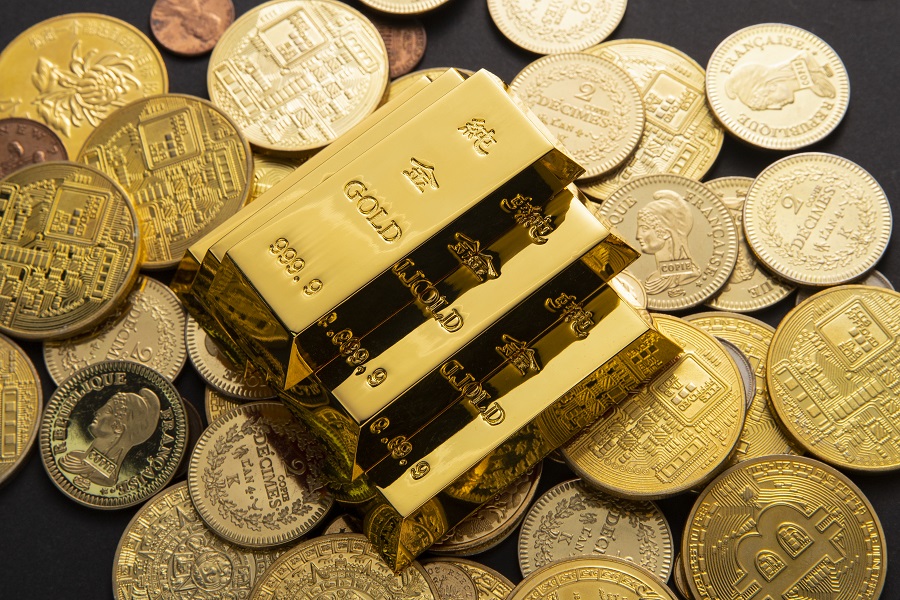
Price of gold has shattered records, blasting past $4,000 per troy ounce for the first time in history. This isn’t just a number; it’s a flashing neon sign pointing to the deep-seated anxiety gripping global investors. The precious metal’s incredible 53% surge this year is a direct response to a world fraught with geopolitical conflicts and economic uncertainty.
So, what’s driving this historic gold rush? Analysts point to a perfect storm of worries.
War, Conflict, and Global Jitters
Investors are fleeing to safety, and gold has always been the ultimate financial bunker. The ongoing war in Ukraine, the devastating conflict in Gaza, and subsequent airstrikes in the Middle East have created a level of instability not seen in decades. These disruptions to global trade and peace are sending people scrambling for the security that only gold seems to offer.
“Usually in a given year, one or two risk drivers move the gold price,” said David Wilson, an analyst at BNP Paribas. “But right now, everything that is a traditional gold driver is happening.”
Economic Anxieties at Home and Abroad
The worries aren’t confined to distant battlefields. On the economic front, a cocktail of fears is fueling the fire. Uncertainty around U.S. economic policies, including former President Trump’s sweeping tariffs that have upended global trade, is a major factor. Add to that concerns about the strength of the U.S. dollar, lingering inflation, and sluggish growth in Europe, and you have a recipe for investor angst.
“The rally is unbelievable, telling us that something bad is happening and that we should be nervous,” said Dan Smith of Commodity Market Analytics.
A Buying Frenzy: From Central Banks to Your Neighbor
The demand for gold is coming from all sides. The world’s central banks are on a buying spree, set to purchase a massive 1,000 metric tons of gold in 2025 as they diversify their reserves away from the U.S. dollar. At the same time, everyday investors are piling in through gold-backed exchange-traded funds (ETFs), which saw a record $17.3 billion flow in during September alone. Demand for physical bars and coins is also robust.
With policymakers keeping borrowing costs low, the opportunity cost of holding gold—which pays no interest—diminishes, making it even more attractive.
What’s Next for Gold?
While some fear the market is overbought and a sell-off is possible, the momentum is fiercely bullish. The breach of the $4,000 barrier has opened the door for further gains. The investment bank Goldman Sachs has already raised its forecast, predicting gold could reach $4,900 per ounce by December 2026.
The big question remains: what will it take to stop the surge?
As BNP Paribas’ Wilson puts it, “What series of events has to happen to make the world take a deep breath and go actually, it’s not so bad? Right now, it’s difficult to see what events would suddenly change sentiment about the global outlook.”
For now, in a world holding its breath, gold continues to shine brighter than ever.
Short-Term Technical Outlook
Gold’s recent rally has pushed prices firmly above the psychological $4,000 level, with intraday resistance forming near $4,050. The candlestick structure shows a series of green candles, indicating sustained buying pressure. Volume remains robust at 71.79K ticks, reinforcing the legitimacy of the move.
- Immediate Resistance: $4,050
- Support Zone: $4,020, followed by $4,000
- Breakout Potential: A confirmed close above $4,050 could open the door to $4,080–$4,100 in the coming sessions.
Traders are watching for a decisive breakout above resistance, while swing positions may favor pullback entries near $4,000 with tight risk management.
Long-Term Strategic Outlook
Looking beyond the immediate horizon, gold’s bullish posture is underpinned by macroeconomic tailwinds. Expectations of a dovish pivot from the Federal Reserve, coupled with persistent geopolitical tensions, continue to support gold as a safe-haven asset.
- Upside Targets: $4,150–$4,200 over the next 1–3 months
- Key Support: $3,900, which served as a base during September
- Macro Drivers:
- Potential rate cuts or pause in tightening cycle
- Inflation hedging demand
- Central bank accumulation trends
However, risks remain. A stronger U.S. dollar or unexpected hawkish policy shifts could cap gains. ETF outflows or reduced institutional buying may also temper long-term momentum.
Gold’s resilience above $4,000 signals a market confident in its defensive positioning. For traders and investors alike, the next few sessions will be critical in determining whether this rally has legs or is due for consolidation.